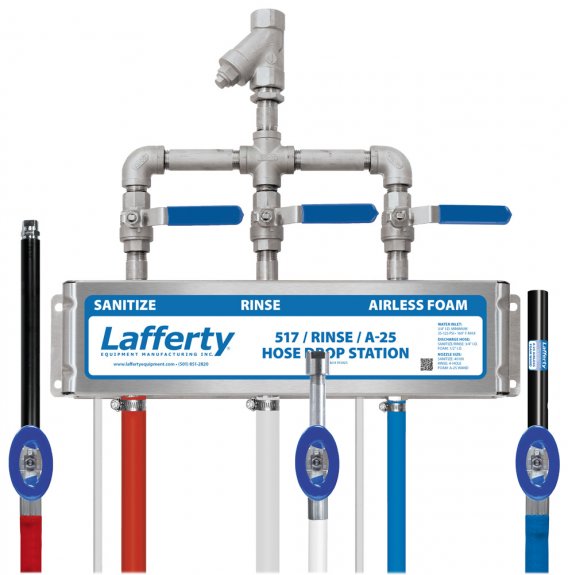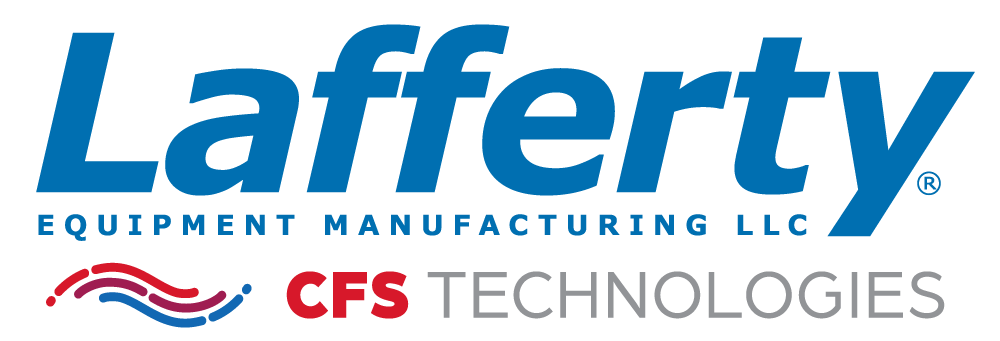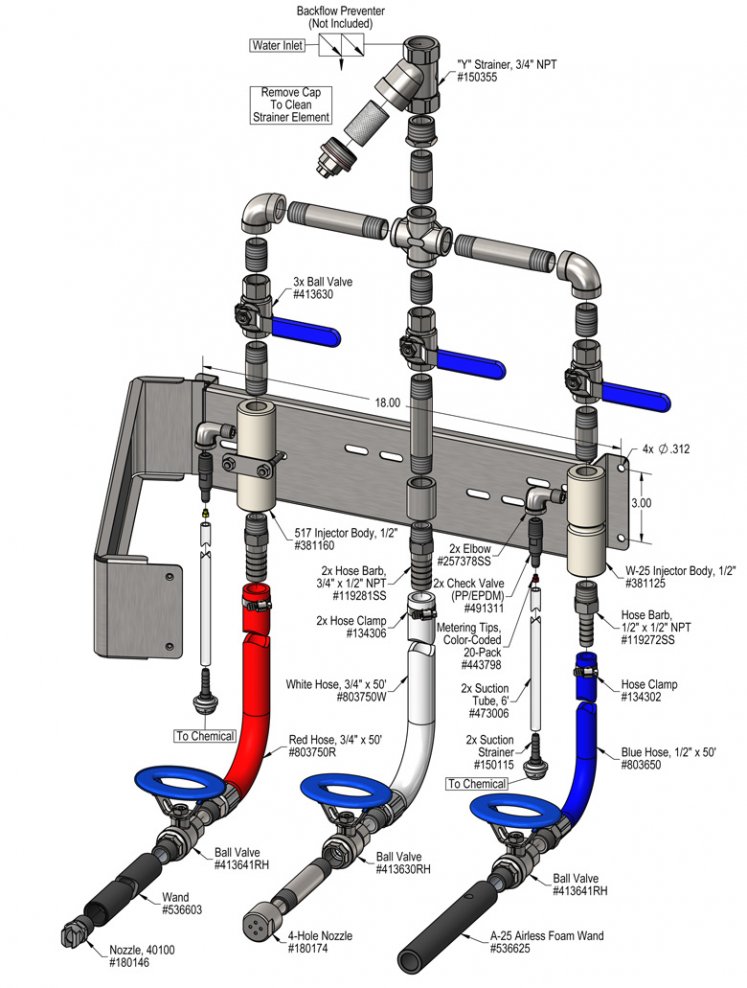Overview
The 517 Sanitize/Rinse/A-25 Airless Foam Hose Drop Station is a combination applicator for applying one chemical as foam, another as a sanitizing spray and for rinsing without compressed air. This venturi injection system uses standard city water pressure (35 - 125 PSI) to draw and blend chemical concentrates into the water streams to create accurately diluted solutions. Precision metering tips are used to control chemical usage. Foaming chemical solution flows through the foam hose to the "airless" foam wand which draws in atmospheric air to create and project wet, clinging foam at distances up to 6 feet. The sanitizer solution flows through the sanitizer hose and is projected as a fan pattern spray in the lean ratios required for no-rinse sanitizing in food plants. Rinse at full pressure using the unique and powerful 4-hole nozzle.


